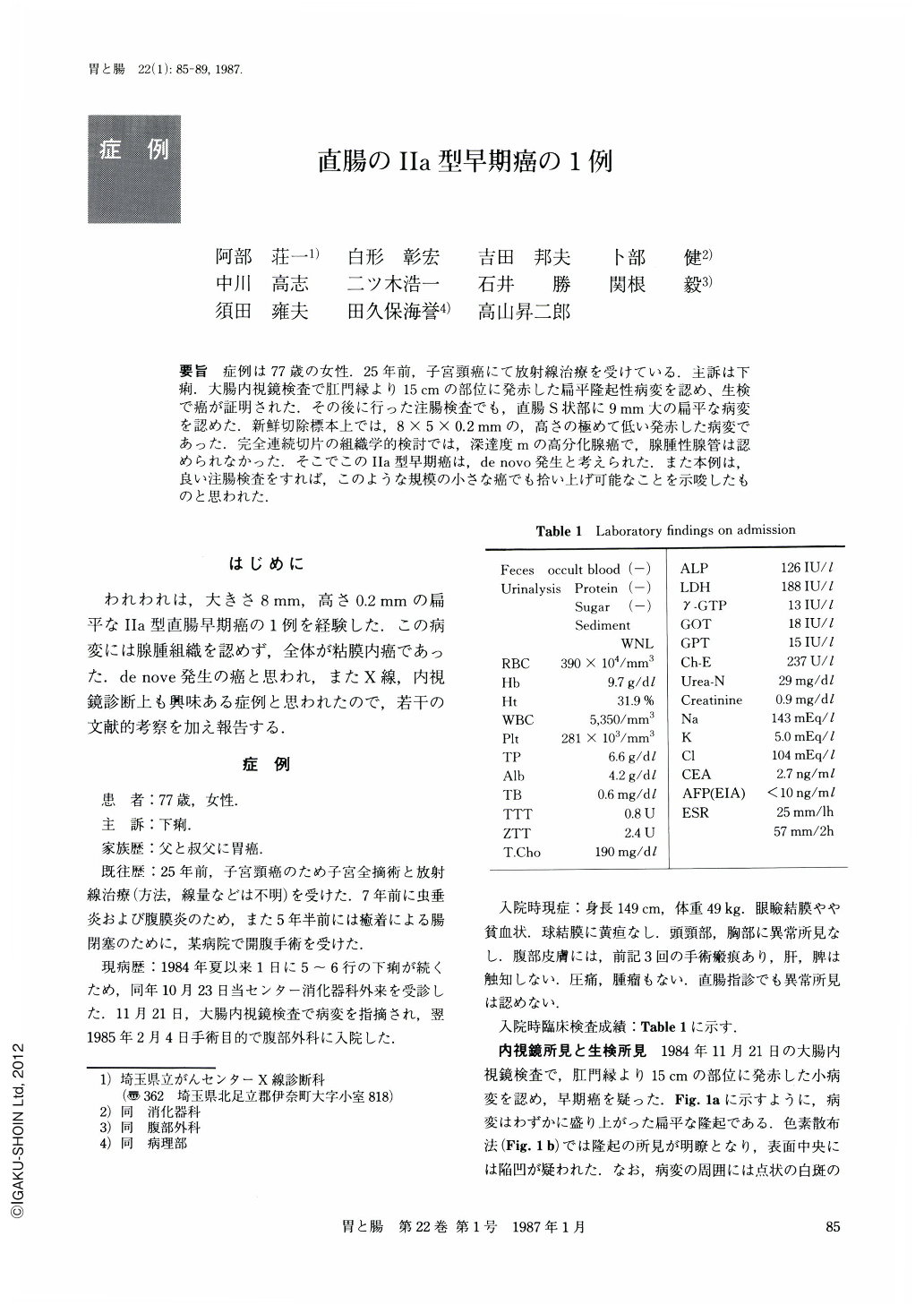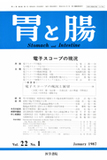Japanese
English
- 有料閲覧
- Abstract 文献概要
- 1ページ目 Look Inside
要旨 症例は77歳の女性.25年前,子宮頸癌にて放射線治療を受けている.主訴は下痢.大腸内視鏡検査で肛門縁より15cmの部位に発赤した扁平隆起性病変を認め,生検で癌が証明された.その後に行った注腸検査でも,直腸S状部に9mm大の扁平な病変を認めた.新鮮切除標本上では,8×5×0.2mmの,高さの極めて低い発赤した病変であった.完全連続切片の組織学的検討では,深達度mの高分化腺癌で,腺腫性腺管は認められなかった.そこでこのⅡa型早期癌は,denovo発生と考えられた.また本例は,良い注腸検査をすれば,このような規模の小さな癌でも拾い上げ可能なことを示唆したものと思われた.
A 77 year-old woman, who had been given radiation therapy for a carcinoma of the cervix 25 years before, was referred to the Saitama Cancer Center with diarrhea in October 1984.
Colonoscopy revealed a reddened sessile lesion at 15 cm from the anal verge (Figs. 1 a and b). A barium enema examination demonstrated a flat polypoid lesion of 9 mm in diameter in the rectosigmoid (Figs. 3 a and b). After a segmental resection of the rectum, the lesion was revealed to be a plaque-like nonulcerated Type Ⅱa carcinoma of 8 × 5 × 0.2 mm in size (Figs. 4 and 5), and was histologically diagnosed as well differentiated adenocarcinoma in the propria mucosa without evidence of adenomatous glands (Figs. 6 a and b). This carcinoma was considered to have arisen de novo rather than from a preexisting adenomatous polyp since such a preexisting polyp could have hardly been destroyed completely by the tiny carcinoma found in our patient. We emphasize that not only colonoscopy but double contrast barium enema as well is useful for detection of early colon carcinomas.

Copyright © 1987, Igaku-Shoin Ltd. All rights reserved.


